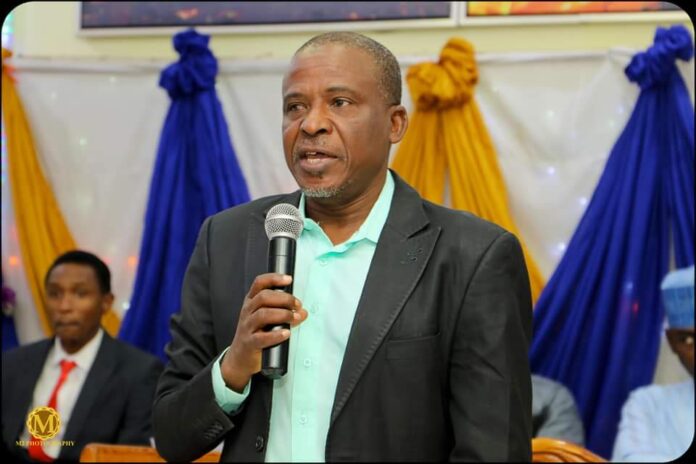Addressing The Crisis Of e-Waste In Our Country
By Y. Z. Ya’u, CITAD
TECHDIGEST – Technology enthusiasts like most people are data-selective. When we want to show digital progress, we go for internet penetration figure or the more problematic one of PC and android phone ownership. But another statistical data that could also show progress would be to look at the amount of electronic waste that is generated in the country.
We will normally not use this because it has negative connotation, but it is an important issue to address. It is one of the crucial indicators of unsustainability of current digitization, the others being having to substitute fossil fuel with cleaner energy sources to fire our digital systems and the need to address carbon emission from the digital devices.
Across the country, in major cities and towns, you are likely to be confronted by the eyesore of heaps and pyramid of discarded computer boxes, out of service printers, scanner rollers, bodies of refrigerators, television cases, etc.
All of these constitute what is termed as electronic waste or more simply as eWaste. When electronic devices are no longer serviceable, they have to be thrown away as they are no longer useful. The rate at which this waste is produced is a proxy measure of the consumption of electronic goods.
However, rate of generation of wastes varies with countries that manufacture electronic goods producing far lesser amounts of eWaste than those that merely import for consumption, every other thing being equal, the reason being that imported goods for a number of reasons, have shorter life span than those left in the manufacturing countries.
The International Telecommunications Union defines eWaste as “items of all types of electrical and electronic equipment (EEE) and its parts that have been discarded by the owner as waste” This definition was adapted in Nigeria’s solid waste policy.
READ ALSO: Why Nigeria needs to invest in tech — NASENI
However, the definition focuses on hardware items such as monitors, handset, etc. It leaves out the non-tangible eWaste such as heat released from the use of ICT systems. In the context of Nigeria, most ICT users will have their generating sets because of insufficient power supply, the emission from generating sets could be significant, thus can be considered a factor in global warming.
This part of the two-part on eWaste focuses on solid waste.
The increasing pyramid of eWaste across cities in the country is due to two factors. On the one hand is the poor enforcement of the relevant local laws and policies regarding disposal and management of eWaste by the government that that has allowed the importation of second-hand digital devices that are not properly screened, the result of which is that a lot of the import is actually ewaste. On the other hand, because of the collapse of the national currency, imported new digital goods have become generally affordable only to a few people in the country.
This has stimulated the demand for more second digital devices. Since secondhand devices have generally shorter life span, they quickly turn to waste and join the growing heaps of eWaste across the country.
There are three sources of eWaste in Nigeria. The first is the obsolesce of equipment and devices. Of recent, this has increased with the importation of second-hand devices as more and more people cannot afford new ones.
The share of second-hand EEE is significantly increasing in the country. In 2010, a study undertaken for the United Nations Environment Programme (UNEP) by Ogungbuyi, O, Nnorom, I, C, Osibanjo, and M. Schluep found the share between new and used EEE was about 50%/50%.
This ration must have greatly change with second probably nearly 90% today. The increase in second-hand EEE is driven by low purchasing power and poverty.
The second source is the illegal importation of eWaste. While importation of wastes is illegal, there have been instances of such importation. In 1988, Italy shipped 18,000 barrels of toxic waste marked to a village in Delta State. In 2013, a Ship (MV Marivia) with two containers of eWaste was apprehended. Such importation takes place across the ports and are able to get through because of corruption in the port system and only get exposed due to some disagreement or action of whistleblowers. In this context, it is difficult to estimate the amount of eWaste that gets into the country. In addition, about 30% of second-hand imports were estimated to be non-functioning (therefore need to be declared as e-waste). UNEP report estimated that for 2010, at least 100,000 tonnes of e-waste entered the country illegally.
UNEP survey also found that large quantities of used e-waste are imported with used cars.
A third contributor to ewaste is the local assembly of electronic goods. There are broadly three types of assemblers.
The first are those who assemble items like refrigerators, radio, etc. The second ones who came to the scene in the 1990s are assembling computers. These are relatively large-scale organizations producing their brand of computers.
The last category consists of small-scale assemblers of non-branded computers. What is common to all the three is that they import completely knocked down parts (CKDs) and assemble them in the country.
There are four common ways of dealing with eWaste. One is the collection of the wastes and incinerating them in specifically designated places.
Read Also:
This seems the easiest but not necessarily the best or the safest. For one, a number of the components of eWaste are neither biodegradable nor fire-destroyable and therefore even after incineration, a lot reminds as waste, occupying space and contributing to continued environmental pollution. In addition, both the emission to the air from the burning of eWaste and the seeping of by-products of the burning into the grounds have serious impact to the environment and therefore leave much to be desired.
A second option that has been used by richer countries is trading in eWaste in which countries with “wasteland” accept eWaste in return for payment from the countries dumping the waste. Nigeria had in the past had received waste as traded item, although now technically importation of waste is banned. Apart from the difficulty of getting a willing buyer, on a global scale this does not address the consequences of eWaste.
The third is built around the concept of recycle, repair and reuse, which requires the recycling for components from eWaste, repairing those that can be repaired and reusing those that can be used for other purposes.
This does not necessarily do away with the waste but rather turn some into useful inputs for either elongating the life span of some digital devices or creating new ones. This in a way serves two dual purposes: reducing the waste and also seeding the circular economy, that reducing consumption of materials for producing electronic goods.
READ ALSO: The Necessity of NITDA Amendments for Digital Economy By Fom Gyem
Elongating the life span of devices in general is a response to the challenges of sustainability because it reduces the consumption of non-renewable resources, that are often obtained through environmentally destructive extractive processes that are in the long run not sustainable.
In this sense, while recycling, repair and reuse does not do away with waste per se, it implants a consciousness and practices of the move away from the linear economy of extraction and consumption of materials to a circular economy of repeated use and the uptake of renewable resources.
The 3Rs requires first, an organized and effective system of waste collection, sorting storing. It also requires equipment for pre-processing of wastes. And, finally, it requires skills for the recycling and reuse.
Luckily, in Nigerians, the recycling sub-sector is growing and has in fact transformed from mere concern with health issues to an economic one in which many people are now engaged in recycling as an economic activity. We need government to improve the situation through appropriate policy making.
A fourth strategy is the use of renewable and biodegradable materials for supporting the digital system. This once reduces waste and ensure your that infrastructure is based on sustainable basis. For instance, one of current work in adoption is the move away from steel-based telecommunication towers to ones made from bamboo trees.
Bamboo trees are agricultural product thus both renewable and non-extractive. In addition, wastes from cutting and sizing bamboo are completely biodegradable. This works through careful substitution. Like the 3Rs, government is called upon to support research and experimentation as well innovation to replace extractive components with renewable ones. For instance, it can do a policy to support large scale farming of bamboo in the country and promote its use in the increasing bird-nest of towers in the country.
We also need to challenge device designers and manufacturers to design with the concept of repair and reuse in mind against the current practice of increased decline in the life span of devices and quick to obsolescence that are embedded in current design practices as a means of maximizing profits for investors.
They also need to move from extinctive components to non-extractive. We must also guard against the use of proprietary components which makes it difficult if not impossible, for repairers to substitute components from one manufacturer to device produced by different ones.
In addition to taking the issue of the circular economy serious, the government needs to ensure the effective enforcement of relevant regulations relating to eWaste in the country.
The National Environmental Standards and Regulations Enforcement Agency (NESREA), an agency of the Ministry was established by law in 2007 with responsibility “for the enforcement of environmental standards, regulations, rules, laws policies and guidelines”. In 2011, the government approved the National Environmental (Electrical/Electronic Sector) Regulations in 2011 as the key tool governing Electrical/Electronic waste in the country.
In addition to NESREA, the Nigeria Communications Commission (NCC) by virtue of the article on equipment type testing, has power to regulate the quality and standards of devices being brought into the country. Also, in pursuant to the provisions of Sections 4, 70, 132 to be in conjunction with Sections 130 and 134 of the Nigerian Communications Act, 2003, NCC has a window to regulate eWaste in the country.
At the moment lots of second hand handsets get into the country through grey routes that escape NCC oversight. Similarly, NESREA has not found effective ways of dealing with importation of second hand computers that are merely junk.
Finally, government itself needs to do more in this area. Although Nigeria is a signatory to the ITU, it has not taken measures to implement the decisions of the Plenipotentiary Conference of the ITU set in 2018 with respect to adapting recycling of e-waste to contribute to a global total of 30% and have e-waste legislation to 50. It needs to act on this.




















